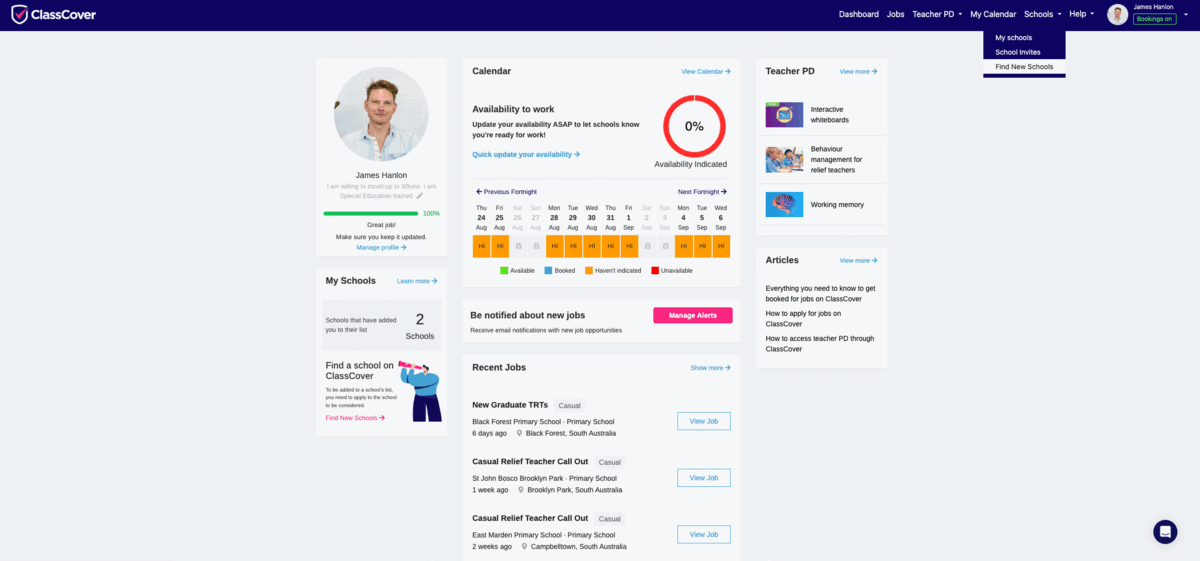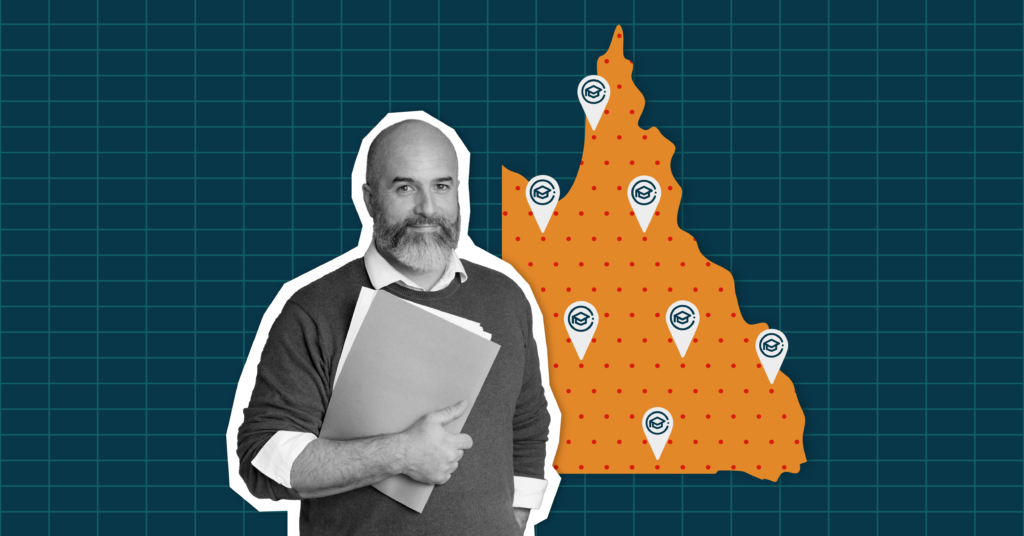Wondering how to become a relief teacher in QLD? Explore this guide to the qualifications you’ll need, how to apply, relief teacher pay in QLD and more.
How to become a relief teacher in QLD
If you want to become a relief teacher in QLD, there are a few steps you’ll need to take before you can begin teaching.
Complete an approved qualification
If you want to become a teacher in QLD, the first step is to complete a degree that is approved by the Queensland College of Teachers (QCT) — these are known as initial teacher education (ITE) programs. In general, an approved ITE programs are:
- Four-year undergraduate university degrees e.g., Bachelor of Education
- Dual or combined degree including an education degree e.g., Bachelor of Arts / Bachelor of Education
- A postgraduate degree in education for those who have already completed undergraduate studies in a field other than education e.g., Master of Teaching or Master of Education
For more information, here is a full list of approved ITE programs from the Queensland College of Teachers.
Register with the Queensland College of Teachers (QCT)
Before you can begin relief teaching in QLD, you must register with the Queensland College of Teachers. In addition to confirming that your degree meets the requirements mentioned above, this registration process looks at:
- Your criminal history. The QCT will request an Australian criminal history check when you apply for registration as a relief teacher in QLD.
- Blue card. All pre-service teachers and education graduates must obtain a blue card signaling their clearance to work with children before they can begin practical experience in Queensland schools.
- English language proficiency (ELP) requirement. All teachers other than those who have completed their teaching qualification in Australia, or a list of other countries must include a report from either a IELTS or ISLPR test showing their proficiency in English. The countries that are the exception to this rule are:
- New Zealand
- The United Kingdom
- United States of America
- Canada
- Republic of Ireland
Depending on the factors listed above as well as your relevant education experience, when your registration to teach in QLD is approved you will be granted one of two levels of registration.
- Provisional registration
Provisional registration for relief teachers in QLD is typically granted to new graduates, those returning from a career break and educators having moved from interstate or overseas. The provisional registration is for a period of two years until the educator can successfully demonstrate they meet the professional standards for full registration, although this can be extended for a further 2-year period.
- Full registration
Full registration is valid for a period of 5-years and is granted to teachers who can prove they meet the following criteria:
- Completion of one year of full-time classroom practice (or the equivalent for relief teachers or part-time teachers)
- Successful demonstration of professional standards for teachers. Learn more about the professional standards for teachers here.
- Completion of a provisional to full report
Submit your application through Teach Queensland
Once you have applied for registration, the next step on your journey to relief teaching in QLD is filling out an application — you can find a link to apply here. The application process will require you to submit proof of your studies in an approved ITE program, along with your academic transcript, ID and proof of application for teacher registration with the QCT.
Apply for relief teaching jobs in QLD
For relief teachers in QLD, there and two main ways to connect with public schools and be booked for supply teacher work.
Get assigned work using TRACER
If you indicated that you were interested in working as a relief teacher in QLD when you filled out your application form with Teach Queensland, you will be automatically added to Education Queensland’s relief teacher register — known as TRACER.
Learn more about getting booked as a relief teacher in QLD with TRACER here.
Connect with schools near you on ClassCover
Another option for relief teachers in QLD is to connect with schools using ClassCover—an app-based booking platform used by thousands of schools across Australia and New Zealand. Available on phone and web, there are two main ways for teachers to find work on ClassCover.
- Reach out to schools in your area
After creating your teacher profile on ClassCover, you’re ready to start connecting with schools in your area. From the Find New Schools page, browse the list of schools or filter by post code, school name and more. When you see a school that you like the look of, send a request to be added to their list. Also keep an eye on your School Invites — this is where schools who see your profile can request for you to join their pool of teachers.
Here’s what it looks like to search for new schools in Brisbane on ClassCover:

- Browse casual teacher jobs across QLD
ClassCover Jobs is the best way to hear about new casual teacher jobs as well as part-time, full-time, and contract opportunities across QLD. No matter what sort of teaching job you’re looking for, it’s a good idea to check ClassCover Jobs as new opportunities are posted daily.
Relief teacher pay QLD per day
Relief teacher pay in QLD is at a rate of $460.97 per day or $92.20 per hour for Education Queensland schools. These figures are correct as of 1/07/2023, however it’s a good idea to check directly with Education Queensland as relief teaching pay in QLD is subject to change.
Learn more about relief teacher pay in QLD here.
Professional Development for relief teachers in QLD
All teachers in QLD, including relief teachers, are required to complete 20 hours of continuing professional development (CPD) in every year that they teach 20 days or more. The pd must be in line with the Australian Professional Standards for Teachers.
While full-time classroom teachers tend to have the benefit of being paid to undertake PD by their employers, most casual relief teachers aren’t so lucky. If you’re looking for a flexible, cost-effective way to complete your teacher PD, ClassCover Learn has over 100 hours of on-demand, online teacher PD. Get unlimited access for as little as $45.
Learn more about ClassCover Learn.
Resume for QLD relief teachers
Before you apply for a new role in education, it’s a good idea to update your CV. We know it can be a minefield deciding which information to include on your resume, particularly if you’re new to teaching or if it’s been a while since you last changed jobs. Here’s some tips on the key details to include on your teacher resume:
Your contact details
This may sound like a no brainer, but having the correct contact details clearly displayed on your resume can mean the difference between getting the teaching job of your dreams or being left hanging. At a minimum, it’s a good idea to include your phone number and email address. If you really want to stand out, include a link to your ClassCover Teacher Portfolio.
Availability
Particularly if you are applying for work as a supply teacher in Queensland, it’s important to include your general availability for schools to see at a glance. This will make things as easy as possible for the person doing the hiring and give you the best chance of getting a callback.
Work history
Make sure you include a summary of your recent and relevant work experience. No, those 6 months you spend scooping ice cream in high school probably don’t need to be on your teacher resume, but any experience that relates to the role you are applying for should be.
Qualifications and PD courses
To help you stand out from other candidates, include any relevant qualifications or PD courses you have completed that would help you in the role.



